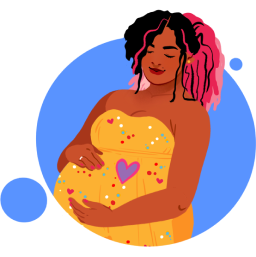
In this article
This year has been all about the pivot. We've discovered new ways to socialize, different ways of staying in touch, and of course, we've completely revamped education in just a few short months. Students have gone back to school virtually, in person, or through a mix of both, known as a hybrid schedule.
You may have heard "blended learning" being used a lot lately in reference to virtual learning, but it's a method that's actually been around for awhile. What is old is new again, right? Whether its slap bracelets or scrunchies, flare-bottom jeans, or the side ponytail, everything comes back around. The same holds true for some styles of education. But what exactly is blended learning and how can it fit into your virtual learning environment?
What is blended learning and how does it affect students and teachers?

The definition of blended learning is that it's simply a combination of online learning and in-person instruction. Hybrid learning may be the catchphrase of the school year, but blended learning has been in place for decades. In fact, it's exactly what we were doing back in the eighties playing Oregon Trail or trying to navigate the Logo programming turtle in the computer lab. A combination of in-person and digital instruction is at the heart of blended learning.
Although blended learning has been around for a while, the methods have changed over the years. We've exchanged floppy disks for smartphone apps, but the goal is still the same; to prepare students for the future. Today, however, incorporating new technology in the classroom is designed not only to enhance the lesson but also to improve and individualize learning.
Kareem Farah, a math teacher and executive director at The Modern Classrooms Project, talked about using online video instruction as part of his blended learning strategy in his classes. "By shifting direct instruction to videos, we teachers give ourselves the freedom to spend the entirety of class time working with students in small groups and individually," he wrote on Edutopia.org.
"The videos are short, and assignments are collaborative and hands-on. All of this creates space for more tailored instruction, peer collaboration, and student ownership of learning."
Examples of blended learning in the classroom

Our family began homeschooling when my older children were in 8th, 7th, and 6th grade. Until then, they all attended public school. My 21-year-old explained with examples of blended learning and what it looked like for her in elementary school.
"There were six elementary classrooms set up around a central computer lab. Each class had a designated day and time to work on the computers. We'd do the assignments online and then go back to the classroom to discuss the lessons," she explained. This method allows students to rotate through educational stations on a set schedule. This model allows all students access to online learning and technology while keeping the school budget in check by using fewer resources.
Blended learning during the pandemic
Note that the method of blended learning described above, while still combining online and in-person instruction, took place entirely on campus. During the pandemic, blended learning may look very different as it combines in-person interaction with virtual learning from home — this is remote blended learning, another popular style of education. My daughter also had experience with this blended learning strategy.
"In high school, we had access to several apps. We would complete assignments at home instead of lugging heavy books back and forth," she said. "For college, I would log on to the school portal, complete the assignments, and would have to just go in for labs or proctored exams. The instructor graded us on the portal and left feedback there as well."
What are the blended learning benefits for your child?

Blended learning, or a flipped classroom model, encourages students to first work online independently. Students then come together with the teacher to discuss concepts and ideas or work through hands-on activities. This model can be highly beneficial for some students.
Blended learning encourages interaction
Students less inclined to speak up in class can feel empowered. After taking in information in the comfort of home, they may feel more comfortable participating in person.
Similarly, according to a study by Sheffield Hallam University, blended learning was responsible for helping students connect with their peers on a social level. "Research literature indicates that increased engagement with educational technology can have the effect of drawing staff and students closer together," the study stated.
Teachers have access to additional metrics
Many online education modules are self-paced. This gives instructors a better opportunity to track students' progress. These metrics can also keep parents in the loop in terms of their child's progress.
“I would say about 95% of my son’s homework assignments are posted online. … I find myself going online and checking to see if he's up to date with his assignments or if there are assignments that he needs to revise that he hasn't mentioned to me," NYC mom Kate previously told Mom.com.
Blended learning uses familiar resources
Learners are surrounded by technology on a regular basis. Blended learning incorporates resources like tablets, apps, laptops, and smartboards, which are familiar and engaging to most students.
Blended learning is not a new concept. It has been part of the classroom setting for several decades now. What remains to be seen, however, is whether or not blended learning or a more permanent version of hybrid education will become the future of education.







